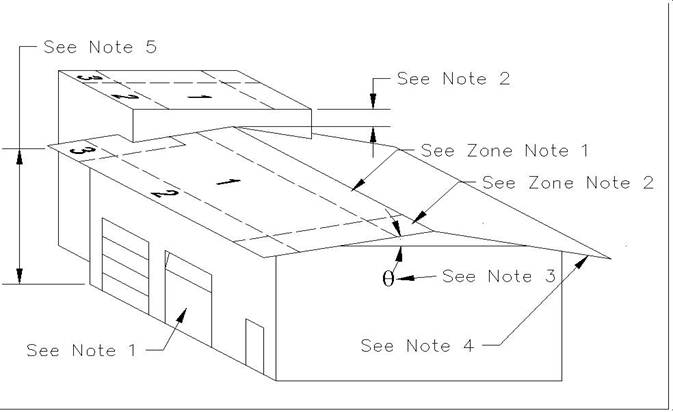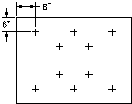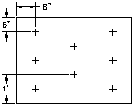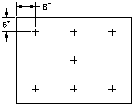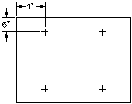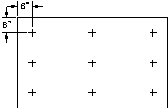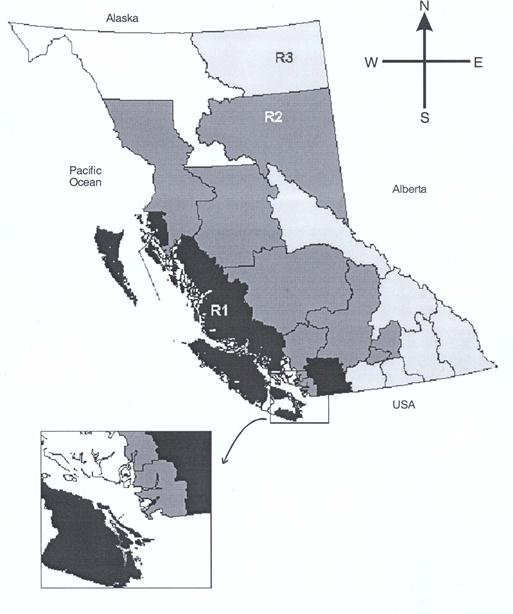Difference between revisions of "Fasteners"
Difference between revisions of "Fasteners"
(→Fastener Corrosion) |
(→Roofing Nails) |
||
| Line 30: | Line 30: | ||
=== Roofing Nails === | === Roofing Nails === | ||
| − | + | Manufacturers of roofing nails that conform to CSA Standard CSA B111, suitable for use in roofing systems include: | |
* National Nail Inc. | * National Nail Inc. | ||
* Simplex Nails | * Simplex Nails | ||
| − | These are available through selected RCABC Associate Members. | + | These are available through selected RCABC Associate Members. |
=== Wind Uplift === | === Wind Uplift === | ||
Revision as of 16:25, 15 July 2016
NOTE TO READER: Where applicable, the content of this page is replicated in the RoofStar Guarantee Standards sections of this Manual
Contents
1 General
Securement of the roof system to the roof deck is necessary to prevent damage caused by wind uplift (possibly resulting in a blow-off) and lateral movement of the roofing materials due to thermal and moisture variations. Traditionally, the roof insulation and roofing are secured to the roof deck by means of mechanical fastening, adhesive, or a combination of both.
RoofStar Guarantee Standards requires mechanical fastening of the insulation wherever practical. Over concrete and other non-nailable decks, or where mechanical fastening is not feasible an adhesive may be used, usually bitumen.
2 Adhesives
In the past, roofing was installed over wood decks using mechanical fasteners. As construction technology progressed, many new types of decks developed bringing with them different securement requirements.
Concrete and other non-nailable decks dictated that an adhesive, usually bitumen, be used to apply the roof insulation and roofing. On sloped roofs where securement is required to prevent slippage, wood nailing strips must be cast into or fixed to the deck to permit mechanical attachment.
On steel decks, the initial use of bitumen as the adhesive has proven to be less successful than adhesion to concrete. Steel deck deflection can result in breaking the adhesive bond between the insulation and the deck. In addition, the use of bitumen may contribute to the fire hazards associated with steel decks.
Several less hazardous adhesives have been developed but have not been entirely successful in achieving adequate adhesion against wind uplift and lateral movement resistance. To properly evaluate an adhesive the design authority must know the strength developed by the adhesive.
Many factors can influence the strength achieved, including substrate characteristics and preparation, bonding area, chemical compatibility of adhesive and insulation and moisture and temperature conditions at time of application. As a result, the industry has developed a large variety of mechanical fasteners designed to secure the roof insulation to steel decks.
3 Mechanical Fasteners
Mechanical fastening to steel decks provides more effective wind uplift resistance and greater horizontal shear resistance than adhesives (thereby decreasing potential membrane splitting). Fastening patterns and rates that have proven to be successful are published in the RoofStar Guarantee Standards and should be enforced as a minimum. In addition to insufficient fasteners, the type of fastener can prove critical. For example, failure may occur from nails with inadequate head size to pull through the roofing felts.
The correct fastener should be specified by the design authority for each component of a roof system.
The design authority should consult with the fastener manufacturer to determine the fastener's pullout strength in specific deck types to determine the number of fasteners required.
Wind uplift has been shown to be greater at the perimeters and therefore fastener requirements vary between field and perimeter areas. In addition, mechanical fastening may be required at the perimeter detail to restrain lateral movement of the membrane.
4 Fastener Corrosion
Responsible fastener manufacturers have developed sophisticated fastener coatings and metal alloys to counteract or slow fastener corrosion. These fasteners are usually tested for corrosion resistance through a method called the Kesternich Chamber. This method stipulates that the fastener be exposed to sulphurous acid for a minimum of 15 cycles and show less than 15 percent rust after testing. Proof of successful testing at least gives an indication of corrosion prevention but the designer must still consider the other corrosion contributors discussed.
5 Roofing Nails
Manufacturers of roofing nails that conform to CSA Standard CSA B111, suitable for use in roofing systems include:
- National Nail Inc.
- Simplex Nails
These are available through selected RCABC Associate Members.
6 Wind Uplift
6.1 Design Wind Loads
6.2 Wind Speed
6.3 Ground Roughness
- Exposure A - Large city center,
- Exposure B - Urban, suburban or wooded area
- Exposure C - Unobstructed areas, in some cases with shoreline
- Exposure D - Flat unobstructed land near open water
6.4 Zones
Under wind loading conditions, Zone 1, the field area, has the least uplift, equal to the force against the wall on the windward side of the building. If a 160 kph (100 mph) wind exerts a pressure of 1.9 kPa (40 psf) against the wall, there is 1.9 kPa (40 psf) of uplift (or outward) pressure on the roof in Zone 1. At Zone 2 (perimeter areas), under certain conditions, the uplift can be as much as 1.68 times the field values (about 3.2 kPa [67 psf]). At corner locations (Zone 3) this factor can be as high as 2.53, producing an uplift pressure of about 4.8 kPa (101 psf). If the building has openings in the walls, i.e.: windows, doors or loading bays which allow the interior of the building to be pressurized, these forces can be as high as 4.6 kPa (97 psf) at Zone 2 and 6.1 kPa (127 psf) at Zone 3. Factors for overhangs increase these values again by as much as 1.6 times in some conditions. This emphasizes the need for enhanced fastening zones in mechanically attached roofing systems.
RGC Guarantee Standards fastening standards take into consideration the worst-case scenario for a wind speed of up to 137 kph (85 mph) and building height up to 18 (60’) to meet the FM 1-90 Wind Rating. For an enclosed building, using ground exposure “C”, the uplift design pressure for Zone 1 is 1.1 kg (24 psf). If the building is partially enclosed with an overhang, Zone 1 becomes 1.7 kPa (35 psf), Zone 2 becomes 2.6 kPa (54 psf) and Zone 3 is 3.3 kPa (69 psf). When designing for taller buildings or for greater expected wind speeds an engineer should be consulted to ensure sufficient attachment. As altitude increases, wind speed typically increases but not directly and some geographic locations regularly have high winds. Therefore, the engineer must consider all these variables when calculating the design wind loads.
6.5 Fastener Pull-out Strength
The total fastener pull-out strength of all fasteners in a sheet must be greater than the total uplift for each sheet being attached. Distribution is also important.
6.6 Fastener Distribution
Fasteners must be distributed evenly throughout the sheet material being attached. The actual strength of the material between fasteners is the issue. If a roof requires 1.7 kPa (35 psf) uplift resistance, a 1.2 m x 2.4 m (4’ x 8’ or 32 ft²) sheet of insulation would require a total force of 508 kg (1120 lb) to resist uplift. A single fastener with 522 kg (1150 lb) pull-out strength would cover the uplift force but clearly would not be sufficiently distributed throughout the sheet. In most cases the distribution of fasteners takes precedence over pull-out strength.
6.7 Deck Material
6.8 WIND UPLIFT DESIGN CRITERIA
6.8.1 ZONE AREAS
- Field Area:
- Zone 1
- Perimeter Area:
- Zone 2. The area at the edge of the roof. Perimeter width shall be defined as the lesser of 10% of the building width or 40% of the building height, but not less than 2.0 m (7’).
- Corner Area:
- Zone 3. Corner area dimensions shall be equal to perimeter width in both directions and not less than 2.0 m (7’).
6.8.2 NOTES
- Wall Openings:
- Contribute to increased wind uplift on roof area. Included in RGC fastener requirements.
- Adjoining Roof Height:
- Where less than 900 mm (3’), design as if one roof. Where 900 mm (3’) or greater, upper roof should be designed as separate roof.
- Roof Slope:
- Wind uplift changes at all Zones as slope changes.
- Overhangs:
- Overhangs increase the wind uplift in some roof locations. Included in RGC fastener requirements.
- Roof Height:
- On slopes under 10° (2’ in 12’ nominal) use eave height for roof height. On slopes 10° (2’ in 12’ nominal) or greater, use mean average roof height (mid-point).
6.8.3 ZONE NOTES
- Ridge:
- On slopes over 10° (1:6 or 2" in 12", nominal) the ridge field area should be upgraded to Zone 2 (perimeter).
- Ridge Corner:
- On slopes over 10° (1:6 or 2" in 12", nominal) and on buildings 18 m (60’) high or less ridge perimeter at the corners should be upgraded to Zone 3 (corner).
NOTE: Refer to RGC Guarantee Standards for additional requirements.
6.9 FASTENER PATTERNS: VARIOUS BOARD SIZES
| 4'x8' | 4'x6' | 4'x4' |
|---|---|---|
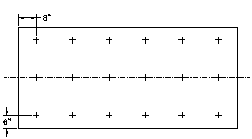 18 Fasteners |
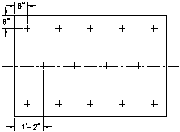 14 Fasteners |
 10 Fasteners |
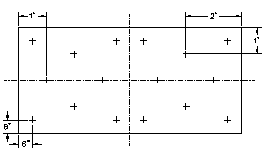 16 Fasteners |
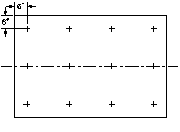 12 Fasteners |
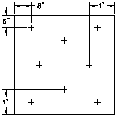 8 Fasteners |
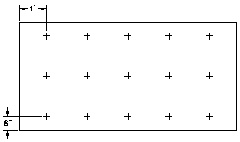 15 Fasteners |
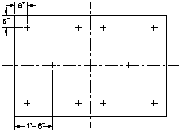 10 Fasteners |
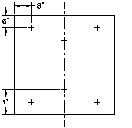 6 Fasteners |
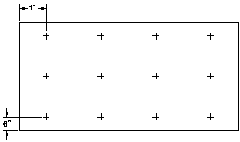 12 Fasteners |
 8 Fasteners |
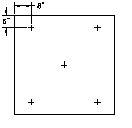 5 Fasteners |
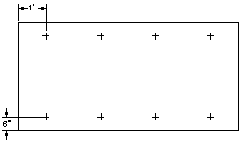 8 Fasteners |
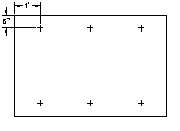 6 Fasteners |
NOTE:
- Fastener locations are for optimum uplift resistance. Fasteners may be located within 50 mm (2") of position shown in diagrams in any direction.
- For acceptable insulation fasteners see RGC Guarantee Standard A4.4
NOTE:
- Fastener locations are for optimum uplift resistance. Fasteners may be located within 50 mm (2") of position shown in diagrams in any direction.
- For acceptable insulation fasteners see RGC Guarantee Standard A4.4
6.10 Regional Wind Speed
The province of British Columbia is divided into three regions:
Region 1 - High wind region
Region 2 - Moderate wind region
Region 3 - Low wind region
Note:
- Region 1 is located near the coast while most of Region 3 is located at the inland area.

